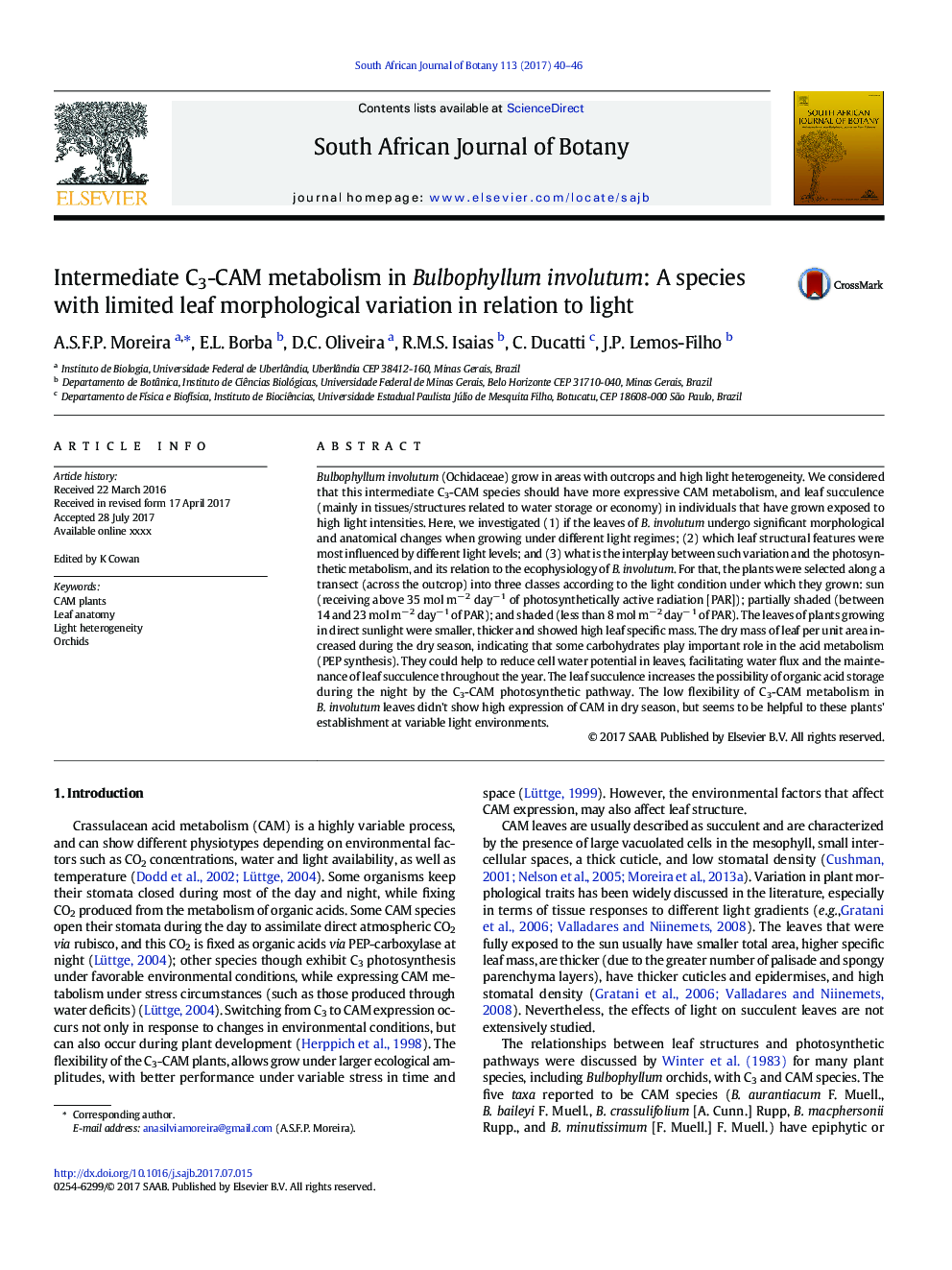| Article ID | Journal | Published Year | Pages | File Type |
|---|---|---|---|---|
| 5762889 | South African Journal of Botany | 2017 | 7 Pages |
Abstract
Bulbophyllum involutum (Ochidaceae) grow in areas with outcrops and high light heterogeneity. We considered that this intermediate C3-CAM species should have more expressive CAM metabolism, and leaf succulence (mainly in tissues/structures related to water storage or economy) in individuals that have grown exposed to high light intensities. Here, we investigated (1) if the leaves of B. involutum undergo significant morphological and anatomical changes when growing under different light regimes; (2) which leaf structural features were most influenced by different light levels; and (3) what is the interplay between such variation and the photosynthetic metabolism, and its relation to the ecophysiology of B. involutum. For that, the plants were selected along a transect (across the outcrop) into three classes according to the light condition under which they grown: sun (receiving above 35 mol mâ 2 dayâ 1 of photosynthetically active radiation [PAR]); partially shaded (between 14 and 23 mol mâ 2 dayâ 1 of PAR); and shaded (less than 8 mol mâ 2 dayâ 1 of PAR). The leaves of plants growing in direct sunlight were smaller, thicker and showed high leaf specific mass. The dry mass of leaf per unit area increased during the dry season, indicating that some carbohydrates play important role in the acid metabolism (PEP synthesis). They could help to reduce cell water potential in leaves, facilitating water flux and the maintenance of leaf succulence throughout the year. The leaf succulence increases the possibility of organic acid storage during the night by the C3-CAM photosynthetic pathway. The low flexibility of C3-CAM metabolism in B. involutum leaves didn't show high expression of CAM in dry season, but seems to be helpful to these plants' establishment at variable light environments.
Keywords
Related Topics
Life Sciences
Agricultural and Biological Sciences
Agronomy and Crop Science
Authors
A.S.F.P. Moreira, E.L. Borba, D.C. Oliveira, R.M.S. Isaias, C. Ducatti, J.P. Lemos-Filho,
